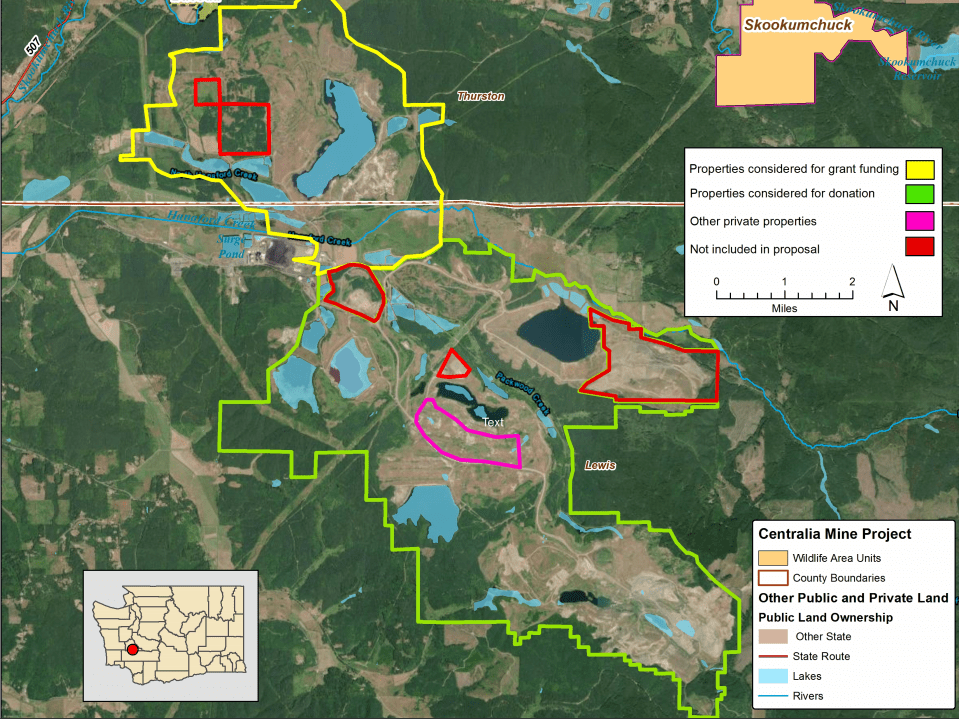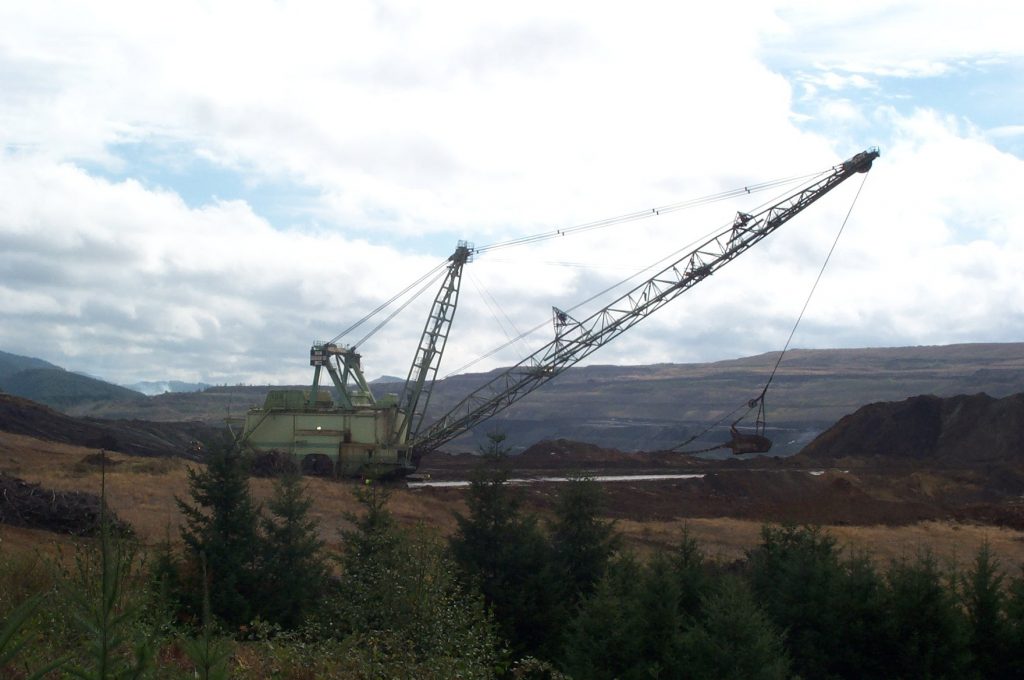WDFW ‘Not Actively Working To Move’ TransAlta Mine Acquisition Ahead For Time Being
While still quite interested in the land for a unique wildlife area, WDFW is pausing its push to acquire a former Southwest Washington coal mine to allow space for local officials to continue conversations with TransAlta about their 15-square-mile property’s future.
That’s according to a Mt. St. Helens day letter to Lewis and Thurston Counties’ boards of commissioners from two of the agency’s regional directors, Kessina Lee and Larry Phillips, news first reported by a local journalist.
“We want to clarify that we are not actively working to move this acquisition forward currently,” they wrote.

TransAlta has stated it wants to donate two-thirds of its 9,600-acre Centralia Mine to WDFW and sell it the other third, and while there’s broad public support, including from the Rocky Mountain Elk Foundation, there are also concerns from Lewis County over lost property taxes and development potential.
Around 200 acres in the mine footprint are owned by a local development authority and the close proximity to the I-5 corridor has been noted. A recent commentary piece in the Centralia Chronicle alleges the Canadian company is “reneging” on promises to donate much more land to the county.
Last month, U.S. Rep. Jaime Herrera Beutler (R) issued a statement calling WDFW’s proposed acquisition a “bad deal” for the county, Washington and “responsible conservation advocates,” saying it went against her plan to bring local jobs through an “opportunity zone” designation.
That came out after WDFW Director Kelly Susewind had greenlighted his staff to begin seeking funding for the deal, so now, instead of writing grant proposals, they will “wait to continue public engagement on this opportunity until TransAlta and local communities can come to a shared understanding for the Centralia Mine property,” Cynthia Wilkerson, agency Lands Division manager, said this afternoon.

“I appreciate the integrity the WDFW has shown by pausing its TransAlta acquisition efforts,” Sean Swope, a Lewis County Commissioner, told Brittany Voie, a former local newspaper columnist turned independent communicator. “This move shows respect for the concerns we’ve raised, and it will allow us to work with TransAlta to create a win-win-win situation that improves our economic vitality … We intend to further explore what can be done with the site, and we applaud WDFW’s efforts to let us do so.”
Wilkerson said that if her agency does get busy on the project again, it would still take “several years to finalize” because of the required restoration work TransAlta needs to finish before achieving “bond release” from the federal government.
“In the meantime, WDFW staff will remain available to provide technical information and answer questions about habitat and species while TransAlta works to implement a reclamation plan to meet all standards prescribed by the Office of Surface Mining Reclamation and Enforcement, including habitat improvements requested by WDFW,” Wilkerson said.
In January, during public comment on the proposed acquisition, Fish and Wildlife Commission members expressed excitement about a potential “showcase” land reclamation project and were pleased that the bulk could be donated to WDFW, but they also encouraged agency staffers to look at the deal with a very “critical eye” given its industrial legacy.

“From our perspective and consistent with our agency mission, the conservation and recreation potential of this landscape would benefit local communities as well as all Washingtonians, and we welcome discussions of approaches that encompass these and other community values,” reads the conclusion of the letter from Lee and Phillips, the WDFW regional managers.
